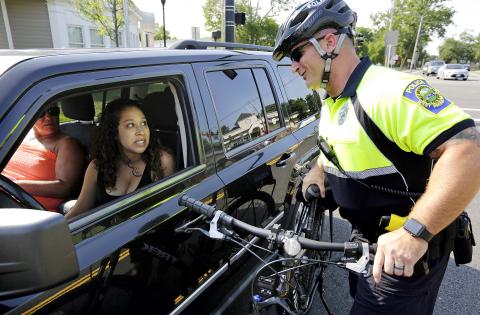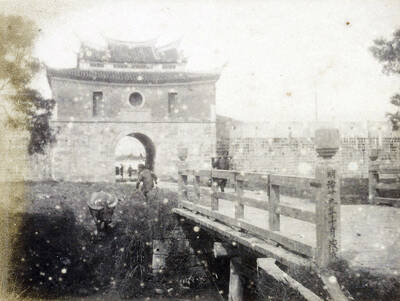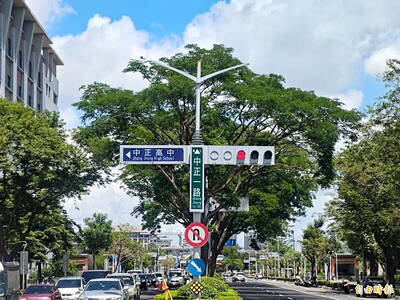The messaging app Snapchat allows motorists to post photos that record the speed of the vehicle. The navigation app Waze rewards drivers with points when they report traffic jams and accidents. Even the game Pokemon Go has drivers searching for virtual creatures on the nation’s highways.
When distracted driving entered the national consciousness a decade ago, the problem was mainly people who made calls or sent texts from their cellphones. The solution then was to introduce new technologies to keep drivers’ hands on the wheel. Innovations since then — car Wi-Fi and a host of new apps — have led to a boom in Internet use in vehicles that safety experts say is contributing to a surge in highway deaths.
After steady declines in the US over the last four decades, highway fatalities last year recorded the largest annual percentage increase in 50 years. And the numbers so far this year are even worse. In the first six months of this year, highway deaths jumped 10.4 percent, to 17,775, from the comparable period last year, according to the National Highway Traffic Safety Administration.

Photo: AP
‘CRISIS’
“This is a crisis that needs to be addressed now,” Mark Rosekind, the head of the agency, said in an interview.
The Florida Highway Patrol is investigating an Oct. 26 crash near Tampa that killed five people. A passenger in one car, a teenager, recorded a Snapchat video showing her vehicle traveling at 115mph (185kph) just before the collision.
A lawsuit filed in a Georgia court claims a teenage driver who was in a crash near Atlanta in September of last year was using Snapchat while driving more than 100mph (160kph), according to court records. The car collided with the car of an Uber driver, who was seriously injured.
Alarmed by the statistics, the US Department of Transportation in October outlined a plan to work with the National Safety Council and other advocacy groups to devise a “Road to Zero” strategy, with the ambitious goal of eliminating roadway fatalities within 30 years.
CRACK DOWN
The Obama administration’s transportation secretary, Anthony Foxx, said that the near-term effort would involve identifying changes in regulations, laws and standards that could help reduce fatalities. That might include pushing for all states to tighten and enforce laws requiring use of seatbelts in cars and helmets on motorcycles while cracking down on distracted or drunken driving. The effort might also include tougher regulation of heavy trucks, Foxx said.
A second, related effort would focus on setting longer-term goals and speeding the introduction of autonomous-driving technologies that many safety experts say have the potential to prevent accidents by removing distracted humans from the driving equation.
One concern so far, though, is that current generations of automated driver-assistance systems, like the Autopilot feature offered by Tesla Motors, may be lulling some drivers into a false sense of security that can contribute to distracted driving.
Whether highway safety officials in the Trump administration will have the same priorities, though, is too soon to say. The names of candidates for transportation secretary have not yet been publicly floated.
Most new vehicles sold today have software that connects to a smartphone and allows drivers to place phone calls, dictate texts and use apps hands-free. Ford Motor has its Sync system, for example. Others, including Honda, Hyundai and Mercedes-Benz, offer their own interfaces as well as Apple’s CarPlay and Google’s Android Auto.
Automakers say these systems enable customers to concentrate on driving even while interacting with their smartphones.
“The whole principle is to bring voice recognition to customers, so they can keep their eyes on the road and hands on the wheel,” said Alan Hall, a spokesman for Ford, which began installing Sync in cars in 2007.
TECH WITH TECH
Since then, the company has added features to reduce distractions, like a “do not disturb button” that lets drivers block incoming calls and texts.
CarPlay allows use of the iPhone’s Siri virtual assistant to answer phone calls, dictate texts and control apps like Spotify and Pandora. Both Sync and CarPlay present simplified menus on a car’s in-dash display to reduce driver distraction and turn off the phone’s screen, eliminating the temptation to use the device itself.
But Deborah Hersman, president of the nonprofit National Safety Council and a former chairwoman of the federal National Transportation Safety Board, said it was not clear how much those various technologies reduced distraction — or, instead, encouraged people to use even more functions on their phones while driving. And freeing the drivers’ hands does not necessarily clear their heads.
“It’s the cognitive workload on your brain that’s the problem,” Hersman said.
Technology in some new cars is meant to reduce driver distractions.
William Chandler, a retired neurosurgeon in Ann Arbor, Michigan, just bought a 2017 BMW X5 sport utility vehicle that warns him if he drifts out of his lane on the highway or if a car is in his blind spot. His favorite feature is a heads-up display on the windshield in front of him that projects his speed, the speed limit and navigation information.
“It puts all the directions and turns right there in my field of vision,” he said. “That’s a real safety factor for distracted driving, because I’m never looking at the map on the screen in the console.”
But new cars make up only a small portion of the 260 million vehicles on the road in the United States. Digital diversion is harder to address in older models.
Insurance companies, which closely track auto accidents, are convinced that the increasing use of electronic devices while driving is the biggest cause of the rise in road fatalities, according to Robert Gordon, a senior vice president of the Property Casualty Insurers Association of America.
“This is a serious public safety concern for the nation,” Gordon said at a recent conference in Washington held by the National Transportation Safety Board. “We are all trying to figure out to what extent this is the new normal.”

June 9 to June 15 A photo of two men riding trendy high-wheel Penny-Farthing bicycles past a Qing Dynasty gate aptly captures the essence of Taipei in 1897 — a newly colonized city on the cusp of great change. The Japanese began making significant modifications to the cityscape in 1899, tearing down Qing-era structures, widening boulevards and installing Western-style infrastructure and buildings. The photographer, Minosuke Imamura, only spent a year in Taiwan as a cartographer for the governor-general’s office, but he left behind a treasure trove of 130 images showing life at the onset of Japanese rule, spanning July 1897 to

One of the most important gripes that Taiwanese have about the Democratic Progressive Party (DPP) is that it has failed to deliver concretely on higher wages, housing prices and other bread-and-butter issues. The parallel complaint is that the DPP cares only about glamor issues, such as removing markers of Chinese Nationalist Party (KMT) colonialism by renaming them, or what the KMT codes as “de-Sinification.” Once again, as a critical election looms, the DPP is presenting evidence for that charge. The KMT was quick to jump on the recent proposal of the Ministry of the Interior (MOI) to rename roads that symbolize

On the evening of June 1, Control Yuan Secretary-General Lee Chun-yi (李俊俋) apologized and resigned in disgrace. His crime was instructing his driver to use a Control Yuan vehicle to transport his dog to a pet grooming salon. The Control Yuan is the government branch that investigates, audits and impeaches government officials for, among other things, misuse of government funds, so his misuse of a government vehicle was highly inappropriate. If this story were told to anyone living in the golden era of swaggering gangsters, flashy nouveau riche businessmen, and corrupt “black gold” politics of the 1980s and 1990s, they would have laughed.

In an interview posted online by United Daily News (UDN) on May 26, current Chinese Nationalist Party (KMT) Chairman Eric Chu (朱立倫) was asked about Taichung Mayor Lu Shiow-yen (盧秀燕) replacing him as party chair. Though not yet officially running, by the customs of Taiwan politics, Lu has been signalling she is both running for party chair and to be the party’s 2028 presidential candidate. She told an international media outlet that she was considering a run. She also gave a speech in Keelung on national priorities and foreign affairs. For details, see the May 23 edition of this column,